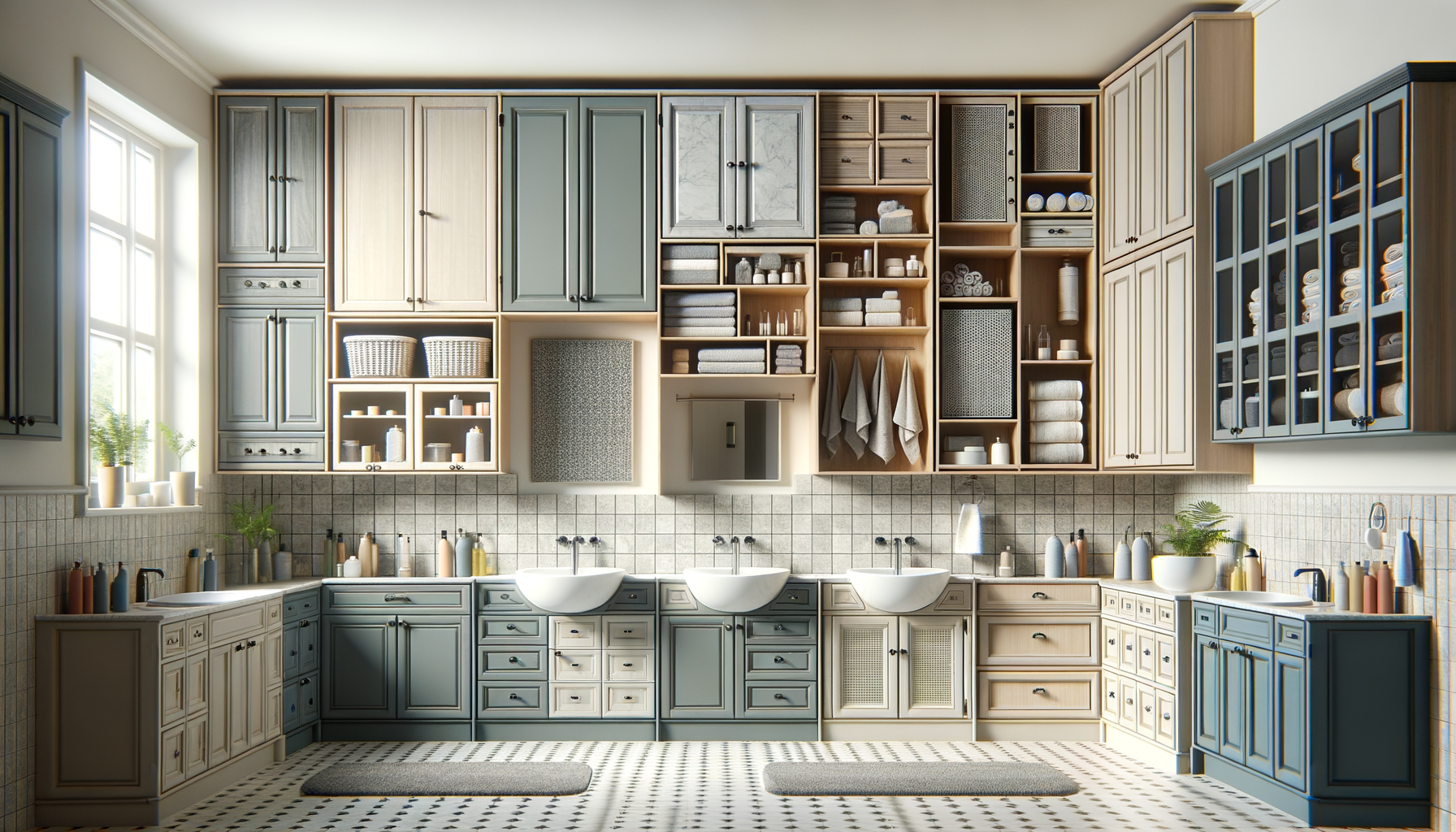
How to Choose the Right Bathroom Cabinet Size for Your Space
Introduction to Bathroom Cabinets
Bathroom cabinets are more than just storage solutions; they are integral components of bathroom design that contribute to the overall aesthetics and functionality of the space. Selecting the right size is crucial, as it can significantly impact the room’s usability and visual appeal. With a myriad of options available, understanding the nuances of cabinet sizes can help you make an informed decision that complements your bathroom’s layout and meets your storage needs.
Understanding Standard Cabinet Sizes
Standard bathroom cabinet sizes are designed to fit most bathrooms, offering a balance between storage capacity and space efficiency. Typically, these cabinets range in width from 24 to 60 inches, with depths of about 21 inches. The height often varies between 30 to 36 inches, providing ample space for storing toiletries and other essentials. Choosing a standard size can simplify the installation process and ensure compatibility with off-the-shelf countertops and sinks.
However, it’s important to measure your bathroom space accurately before selecting a cabinet. Consider the placement of plumbing fixtures, electrical outlets, and door swings to ensure a seamless fit. Standard sizes are convenient, but they may not suit every bathroom, especially those with unique architectural features or limited space.
Custom Cabinets for Unique Spaces
For bathrooms with unconventional layouts or specific design requirements, custom cabinets offer a tailored solution. Custom cabinets can be crafted to any dimension, allowing homeowners to maximize space in small or irregularly shaped bathrooms. While custom options are generally more expensive, they provide flexibility in terms of materials, finishes, and configurations.
When opting for custom cabinets, consider the overall style of your bathroom. Whether you prefer a modern, minimalist look or a classic, traditional design, custom cabinets can be designed to align with your aesthetic preferences. Additionally, custom cabinets can incorporate unique features such as built-in lighting or integrated shelving, enhancing both functionality and visual appeal.
Choosing the Right Material and Finish
The material and finish of your bathroom cabinet can significantly influence its durability and appearance. Common materials include wood, laminate, and metal, each offering distinct advantages. Wood cabinets, for example, provide a warm, natural look and can be finished in various stains or paints to match your decor. Laminate cabinets are often more affordable and resistant to moisture, making them a practical choice for bathrooms.
When selecting a finish, consider the maintenance requirements and how it complements other elements in your bathroom. Glossy finishes, while visually striking, may show fingerprints and require frequent cleaning. Matte finishes, on the other hand, offer a more understated look and are easier to maintain. Ultimately, the choice of material and finish should reflect both your personal style and the functional needs of your bathroom.
Installation Considerations and Tips
Proper installation is key to ensuring your bathroom cabinet functions well and lasts for years. Begin by marking the desired location on the wall, taking care to align the cabinet with existing plumbing and electrical fixtures. Use a level to ensure the cabinet is straight, and secure it to the wall studs for stability.
Consider hiring a professional installer if you are unfamiliar with carpentry or plumbing work. A professional can ensure the cabinet is installed correctly and safely, preventing potential issues such as leaks or misalignment. Additionally, a professional can offer advice on optimizing your cabinet layout for maximum storage efficiency.
Finally, remember to leave enough clearance around the cabinet for easy access to drawers and doors. Adequate spacing will prevent damage and make daily use more convenient, enhancing the overall functionality of your bathroom.


